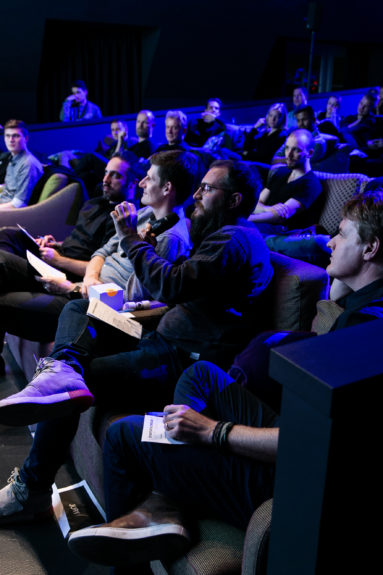
November 12, 2020
Christian Lindener: Insider Advice for Successful Corporate Venturing
As a key player in various startup ecosystems, a startup mentor and founder himself, Christian Lindener knows startups inside-out. In his current role as Global Head of Airbus BizLabs he runs Airbus’ corporate venturing efforts. For our most recent Factory Berlin Masterclass Christian gave a glimpse of how his team are driving innovation in the ‘company of inventors’, and shared advice for tackling intrapreneurship and startup collaborations.
Explore + Exploit: The ambidextrous nature of a corporate venturing team
The function of the innovation arm of a business is ideally twofold: to explore external opportunities, and to exploit the core business’ competitive advantage.
The focus of the team is multifunctional. They analyse market trends, identify new market opportunities and find the chances for the core business to innovate. A great deal of work goes into research, analysis and relationship-building to get to a point where these projects can take off.
On the other side, the team needs a deep understanding of how this relates to the company’s core business. What benefits can a startup provide for other areas of the corporate? How can the core business uniquely support the growth of this startup? Is the established customer base a fertile environment to grow and scale this product?
The skillset of your team needs to reflect this ‘ambidexterity’ as Christian calls it – a group that can deliver on all fronts.
“An ambidextrous organization is essential - you can’t just do one or the other. ”
Remember the ripples when measuring success
‘Innovation can be measured’ states Christian. During the Q&A he further explained that while revenue is the leading KPI for an innovation unit, it’s important not to forget the secondary benefits. The team isn’t just there to deliver successful projects that make revenue. Their research and analysis of trends and emerging markets should be shared so all units can evaluate potential opportunities. Companies witness cultural and organizational shifts towards an innovation-driven mindset. There are opportunities to develop relationships with institutions, and ultimately it can be a ‘big sales sweetener’ and brand builder to have a corporate venturing team.
Keep your intrapreneurs hungry
Is the approach with intrapreneurship different to working with external startups? ‘Oh yes, the difference is huge,’ says Christian.
He cites business maturity as a key difference. When working with startups, Christian’s team looks for more established teams and businesses. They’re already up and running, perhaps they have their first customers. They may have worked in these corporate partnerships before, and also have the security protocols and systems in place for collaboration. This isn’t the case in an intrapreneurship program that builds from scratch.
He believes ‘it’s the hungry belly that makes a startup successful,’ explaining that this is hard to replicate on an intrapreneurship program. Scarcity of resources is what drives ambition and pushes a startup to strive for success. You can learn the processes, structures and steps of intrapreneurship, but ultimately, Christian states, you have to incentivize that hunger.
However, he adds, you can create a similar incentive with your intrapreneur by giving them the opportunity to run their project, to scale the startup with relative freedom and succeed outside the corporate.
“It’s the hungry belly that makes a startup successful.”
Get the buy-in from all units early on
But most importantly – how do corporations ensure that their corporate venturing projects continue to thrive in the long term?
‘If they don’t put skin in the game early on, it’s not going to work.’ If you’re trying to build something disruptive from the outside, detached from the core – that’s where innovation units are failing. Success relies on you bringing the core of your business on board from the very beginning – not just financially, but truly working together. Co-creation is better than doing it in isolation: ‘The corporate antibody will always reject innovation from the outside.’

Corporate venture teams must act as a corporate-startup translator
It’s not news that the startup-corporate partnership can often come with some friction. Christian sees the innovation unit as an antidote to these sometimes challenging relationships.
“Having a buffer zone between the startups and the core business is sometimes essential. Sometimes we act as translators.”
The corporate venturing team is able to align the objectives of the different teams, finding a middle point. How? Open communication – they seek to bring everyone onto the same page. To work together you have to understand the perspectives of the other party, and why they operate in a certain way. Using the example of slower decision-making Christian says that ‘when you explain [to the corporate], they totally get it.’
On the other hand, their mission is to teach and support startups in B2B business so that the collaboration can thrive. ‘They need to level up on the B2B game – for example, it’s not like the pitching you’re used to at Slush or WebSummit.’

For privacy reasons Youtube needs your permission to be uploaded. For more details, please see our Privacy Policy.
To see this video you have to opt in for our external media. You can click on accept to add this to your preferences. You can also see this video as an external link.
here




